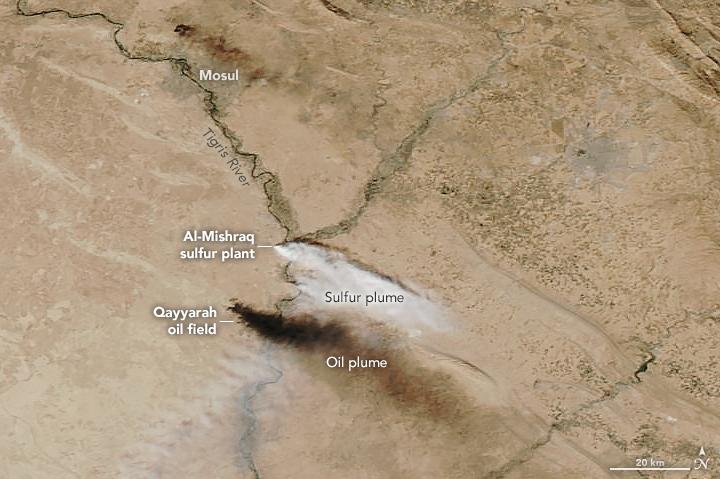MOSUL, Iraq, Oct. 25 (UPI) -- Sulfur dioxide is emanating from a fire at a mine in northern Iraq. As new satellite images show, the noxious gas is diffusing across the region's lower atmosphere.
The fire ignited last week at a sulfur extraction and processing facility near Mosul, Iraq. Since then, a plume of sulfur dioxide has grown in size. An image captured by NASA's Aqua satellite shows wind pushing the plume toward the southeast.















